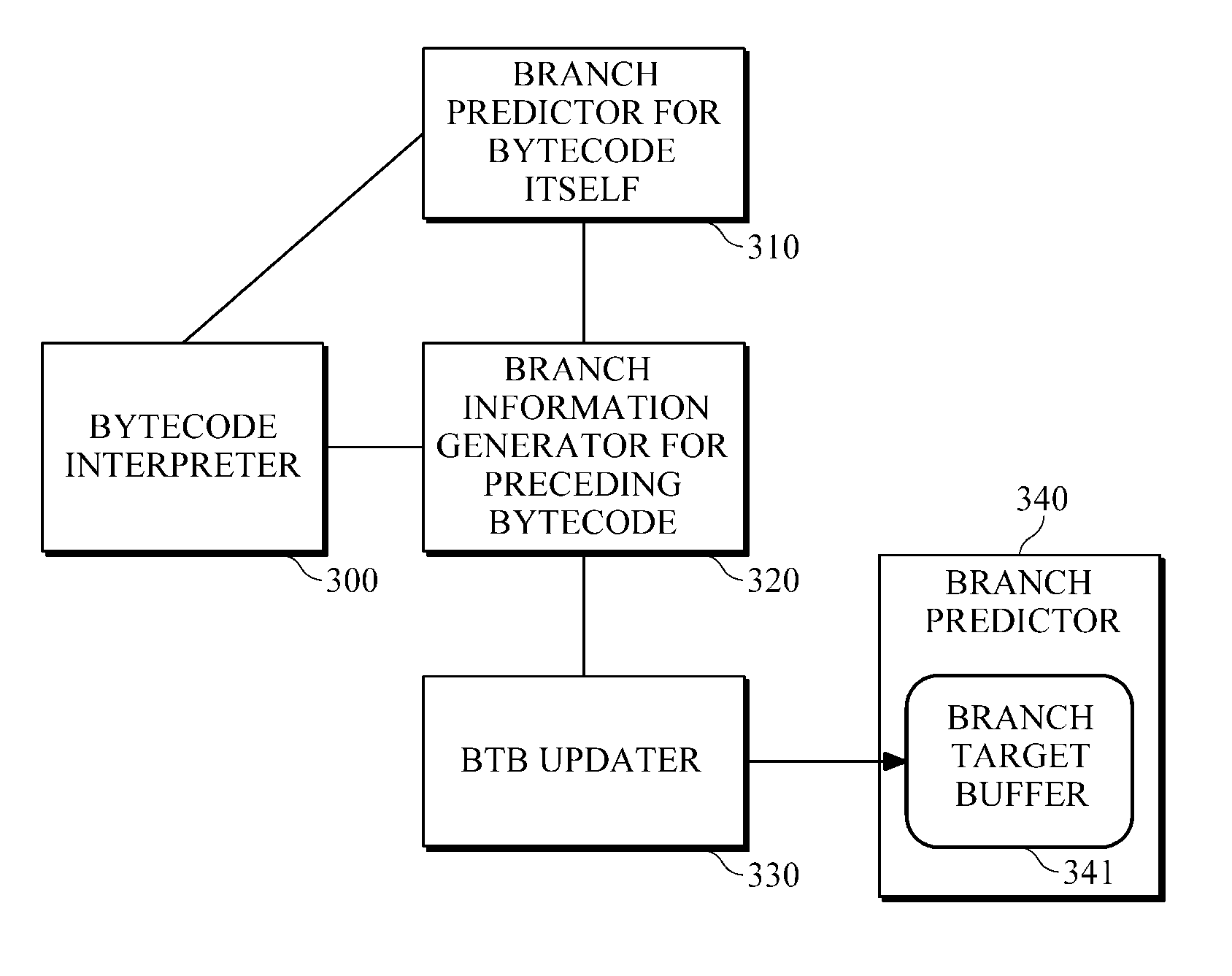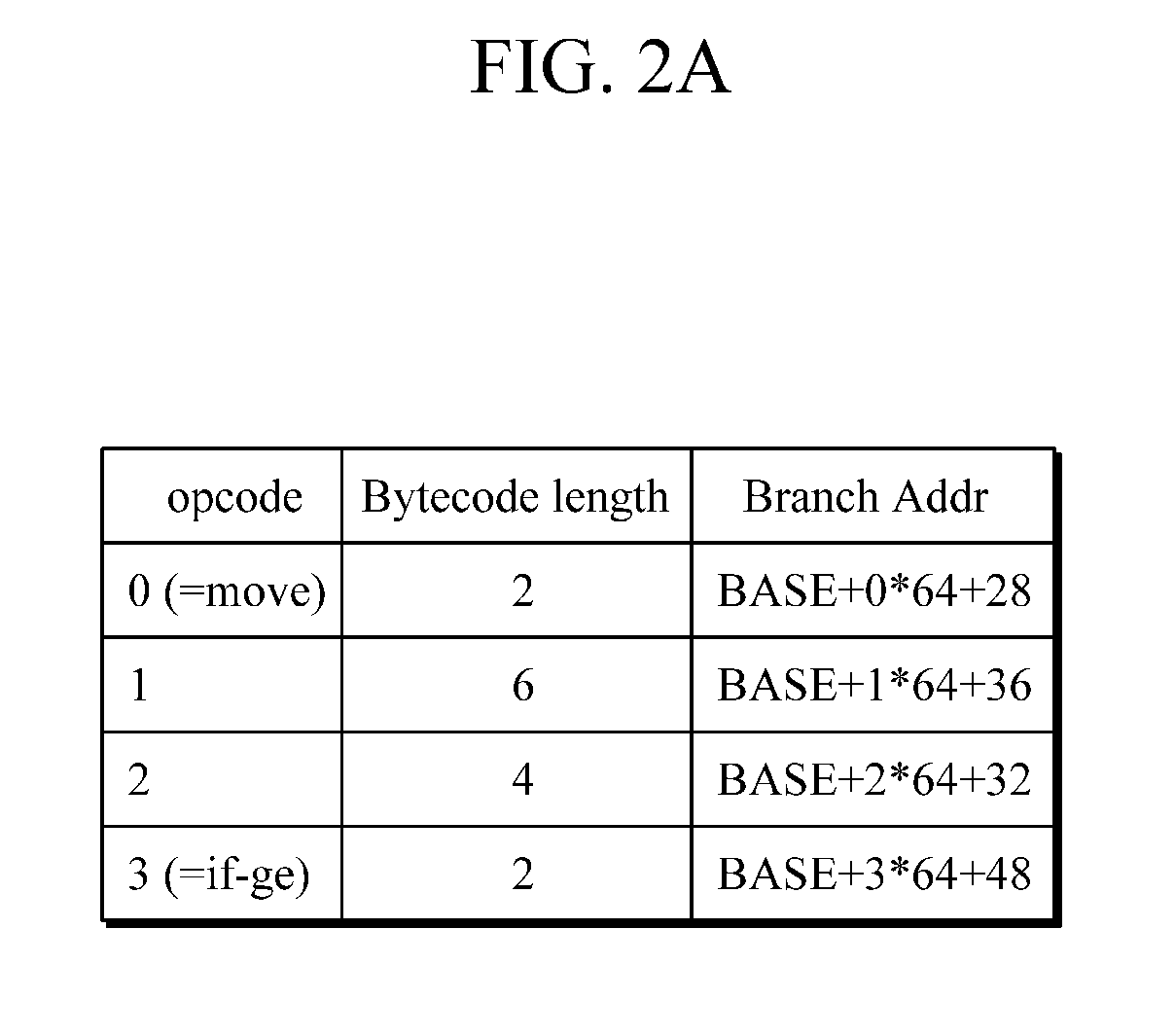Looking ahead bytecode stream to generate and update prediction information in branch target buffer for branching from the end of preceding bytecode handler to the beginning of current bytecode handler
a prediction information and bytecode technology, applied in the field of bytecode interpreters, can solve problems such as deterioration of performance, increased branch misprediction, and difficulty in actively introducing jitc in embedded systems,
- Summary
- Abstract
- Description
- Claims
- Application Information
AI Technical Summary
Benefits of technology
Problems solved by technology
Method used
Image
Examples
Embodiment Construction
[0035]The following description is provided to assist the reader in gaining a comprehensive understanding of the methods, apparatuses, and / or systems described herein. Accordingly, various changes, modifications, and equivalents of the methods, apparatuses, and / or systems described herein may be suggested to those of ordinary skill in the art. Also, descriptions of well-known functions and constructions may be omitted for increased clarity and conciseness.
[0036]The processing and handling components described herein may be or may be included in a terminal, such as a mobile terminal, a computer, a smart phone, a MP3 player, and the like.
[0037]FIG. 1 illustrates an example of a virtual machine bytecode and a direct-thread handler.
[0038]Referring to FIG. 1, the handler shown in the example may be used to process a branch in favor of a processor. The handler may be implemented as an interpreter in a virtual machine such as a JAVA® or ANDROID® DALVIK® virtual machine.
[0039]In the example...
PUM
 Login to View More
Login to View More Abstract
Description
Claims
Application Information
 Login to View More
Login to View More - R&D
- Intellectual Property
- Life Sciences
- Materials
- Tech Scout
- Unparalleled Data Quality
- Higher Quality Content
- 60% Fewer Hallucinations
Browse by: Latest US Patents, China's latest patents, Technical Efficacy Thesaurus, Application Domain, Technology Topic, Popular Technical Reports.
© 2025 PatSnap. All rights reserved.Legal|Privacy policy|Modern Slavery Act Transparency Statement|Sitemap|About US| Contact US: help@patsnap.com



